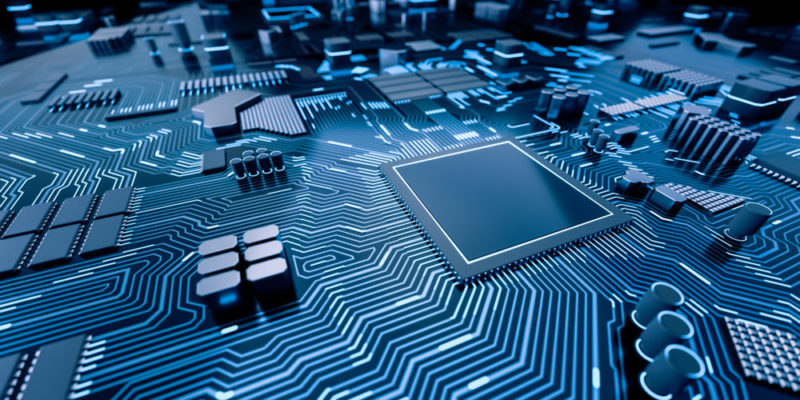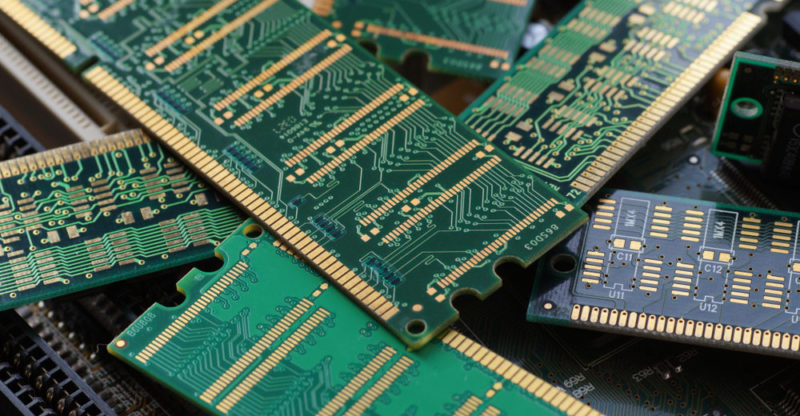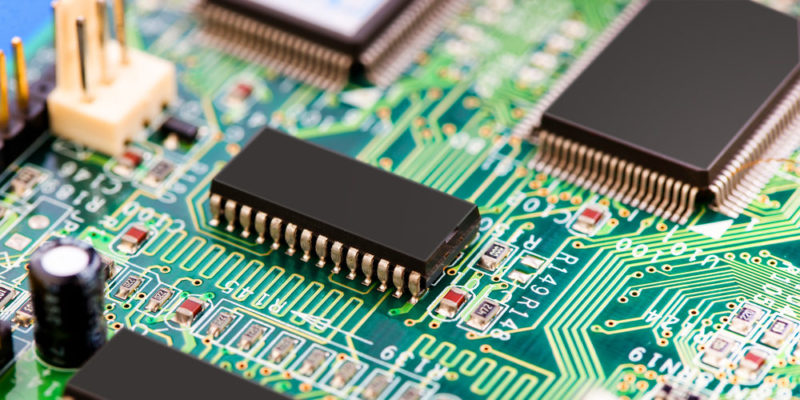We explain what computing hardware is, how it is classified and its storage units. In addition, its characteristics, peripherals and examples.
What is computing hardware?
Computing hardware is the set of physical and material elements, tangible, that make up a computer system or a computer. This includes its mechanical, electronic, electrical and peripheral components, and excludes the logic programs and digital elements, which make up the software .
The distinction between hardware and software in computing is similar to that between body and soul in certain branches of philosophy : the first term implies the physical and perishable aspects , while the second the intangible and ethereal aspects.
1. Origin of the term
The term computing hardware has been used since the 16th century, when it designated tools made of hard or heavy metals such as iron , intended for hardware or physical work. But since the 1940s, with the appearance of the first and primitive automatic calculation systems and then computerized calculation, it became essential to distinguish between the physical aspect of the machine and the logical one, which is why this term was rescued with a new meaning. since 1947.
2. Delimitation

Given that the physical components of a computer or computational system can be very varied, a first delimitation of the concept of computing hardware proposes understanding it from two categories:
- Principal: The main computing hardware is the one that is essential for the operation of the system itself, that is, for its basic operation.
- Complementary: The complementary computing hardware would be all that destined to fulfill specific and secondary functions, only carried out if the main one is working correctly.
3. Computing hardware types
Commonly, the hardware of computer systems is classified according to its function in the system, according to six possible categories, which are:
- Prosecution: Elements that constitute the heart of the system or computer, that is, its mechanical ability to perform logical operations. It is also known as Central Processing Unit (CPU).
- Storage: Elements that allow information to be saved to retrieve it later, either on internal supports of the machine or removable and portable supports.
- Input peripherals: Specific function devices, integrated into the machine or removable, that allow information to be entered into it.
- Output peripherals: Specific function devices, integrated into the machine or removable, that allow extracting or retrieving information from it.
- Input and output peripherals: Devices that combine the input and output of system information.
4. Processing units

The CPUs of modern computers are the basic element of the entire system, without which it simply cannot be used. It comprises a microprocessor , responsible for performing logical operations at superhuman speeds , inserted into a motherboard or motherboard in which the memory units (RAM and ROM) are also inserted, and the storage disks are connected. All the electronic circuits that make up the computer system are mounted on this motherboard, it is its operating core.
5. Storage units

This is the name given to the different forms of memory that a computer system has, and which are commonly:
- RAM ( Random Access Memory ). A type of random access memory that is cleared at system startup or restart because it is available as a place to temporarily store system data.
- ROM ( Read Only memory ). The read-only memory serves to provide the system with identical and unmodifiable information necessary for its operation, such as certain basic data systems that allow it to function.
- Secondary storage disks. They are the places where the information contained in the computer is accumulated and recovered, such as the operating programs, the functional ones or the files generated by the user. They can be fixed (hard disks) or portable (compact disks, pen drivers, floppy disks).
6. input peripherals
The input peripherals are those non-essential elements of the system that allow information to be entered into it , either by the user or a network of them, or from a removable storage unit. Thus, examples of this are digital cameras, keyboards and mice , compact disc players, etc.
7. output peripherals

Output peripherals are used to extract information from the computer system , either digitally or on a physical medium (paper, for example). This means that printers, fax machines, monitors, and speakers are examples of output peripherals.
8. Input and output peripherals
Also called ‘mixed’, these peripherals perform the function of entering and extracting information from the computer system at the same time. Examples of this are multifunctional printers , which allow you to scan a document and then print it, or head set systems (microphone and headphones) that allow you to speak and listen to a distant interlocutor.
9. Computing hardware history

Four different generations are identified in the evolution of computing hardware, marked by a specific technological advance that revolutionized them, and they are:
- 1st generation (1945-1956). The first calculating machines that did not work with relays, but through vacuum tubes.
- 2nd generation (1957-1963). Electronics using transistors, which reduced the overall size of computers considerably.
- 3rd generation (1964-today). Integrated circuit electronics, printed on silicon wafers.
- 4th generation (future). There is talk of this fourth generation as devices that go beyond silicon plates and venture into new computational formats. There is much speculation about it.
10. Computing hardware examples
Common examples of computing hardware are: monitors, keyboards, video, sound and graphics cards , processors, RAM memory modules, microphones and speakers, multimedia cameras, touch screens, headphones, etc. printers of all kinds, fax machines, modems, network cards, electrical circuits, electric batteries, disks, pen drivers.
The above content published at Collaborative Research Group is for informational and educational purposes only and has been developed by referring reliable sources and recommendations from technology experts. We do not have any contact with official entities nor do we intend to replace the information that they emit.














